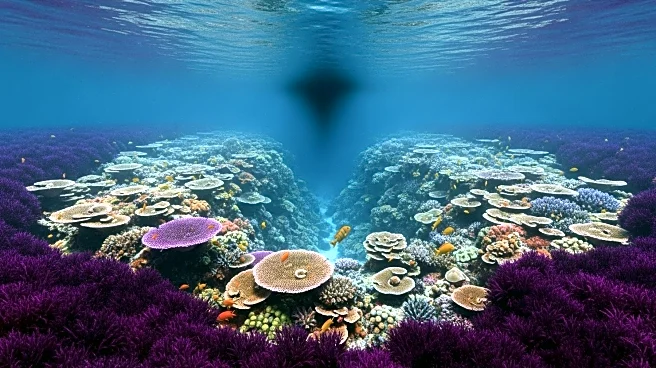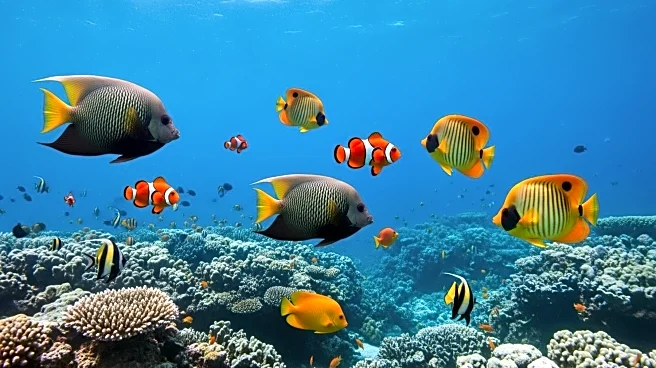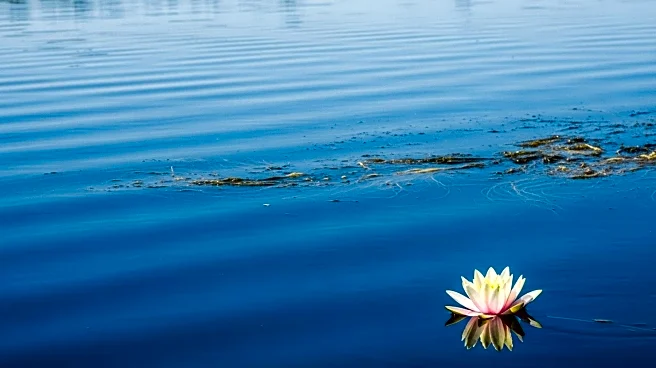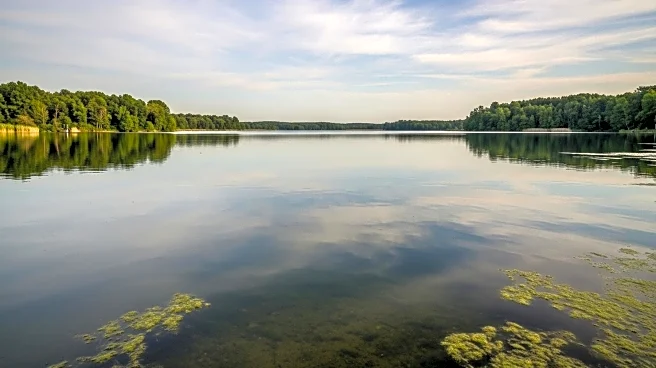What's Happening?
South Australia is experiencing a significant environmental crisis due to an algal bloom that has resulted in the death of thousands of marine animals. The bloom, identified as Karenia mikimotoi, has led to the washing up of over 34,000 dead marine animals, including 61 leafy seadragons and 604 Port Jackson sharks, on South Australian beaches. Citizen scientists have been actively involved in documenting the disaster, using platforms like the iNaturalist app to log observations. The bloom was first noticed in March when a surfer reported respiratory issues after exposure to the water. The community has since mobilized to gather data and raise awareness about the situation, with ecologists and organizations like OzFish leading efforts to understand and mitigate the impact.
Why It's Important?
The algal bloom in South Australia highlights the vulnerability of marine ecosystems to environmental changes, such as marine heatwaves, which can trigger such blooms. The mass death of marine life not only disrupts the local biodiversity but also affects the fishing industry and tourism, which are vital to the region's economy. The event underscores the need for robust monitoring and response strategies to prevent and manage similar occurrences in the future. The involvement of citizen scientists demonstrates the power of community engagement in environmental conservation, providing valuable data that can inform policy and restoration efforts.
What's Next?
In response to the crisis, state and federal governments have allocated $28 million for science and research to support local communities and industries affected by the bloom. There is a call for a $40 million investment in a long-term monitoring program to better predict and manage future algal blooms. Organizations like OzFish are working on restoration projects, such as seagrass meadow and shellfish reef restoration, which could help mitigate the effects of algal blooms. The community's ongoing efforts to document and understand the bloom will continue to play a crucial role in shaping future environmental policies and actions.
Beyond the Headlines
The algal bloom has sparked discussions about the role of government in environmental crises, with criticisms of slow responses leading to the spread of misinformation. The event has fostered a sense of community trust and collaboration, as local groups work together to address the issue. The restoration of shellfish reefs, particularly with native oysters that consume Karenia mikimotoi, offers a potential natural solution to managing algal blooms, highlighting the importance of ecosystem-based approaches to environmental challenges.












